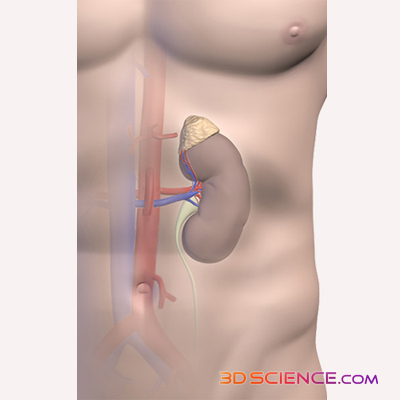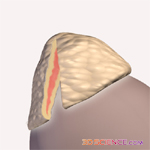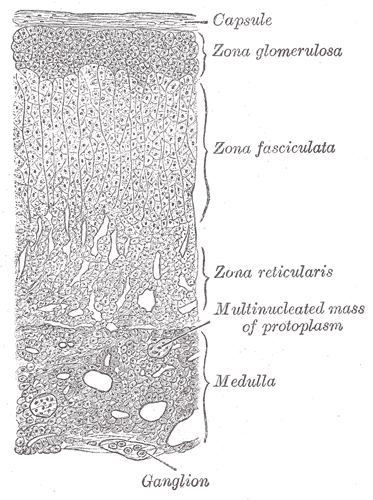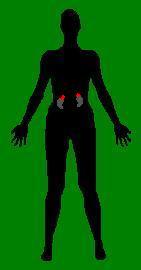What Do The Adrenal Glands Do?


The Adrenal Glands
Each of the two triangular/pyramid shaped, walnut sized, adrenal glands is located directly above each kidney, in the abdomen.
They are endocrine glands, which secrete hormones. Their main purpose is to help the body respond to stress.
Each gland is divided into an outer cortex and an inner medulla. The cortex and medulla each secrete different hormones.
Both the cortex and medulla are stimulated by the hypothalamus, which is a small structure at the base of the brain that stimulates the pituitary gland. The cortex is regulated by negative feedback, such as decreased blood flow to the kidneys, while the medulla is regulated by nerve impulses like emotional distress or exercise.
The Adrenal Cortex
The cortex consists of three different regions. Each region produces a different type or group of hormones.
The outermost region is called the zona glomerulosa. This produces mineralocorticoids, which influence the metabolism of sodium and potassium. The main mineralocorticoid is aldosterone, which is secreted in response to increased potassium levels or decreased blood flow to the kidneys. Aldosterone acts to conserve sodium and potassium ions and water in the body.
The middle region is called the zona fasciculata. This has the same function as the most inner region of the adrenal gland, and it is thought that the zona fasciculata may only be activated when the innermost region requires back up.

The innermost region is called the zona reticularis. This chiefly secretes glucocorticoids, the main one being cortisol, which enhances the metabolism by stimulating the breakdown of fat, the release of aminio acids from the body and the production of glucose.
Cortisol also assists the body to conserve glucose. The zona reticularis also produces a small amount of androgens, the male sex hormones, in both males and females. These assist with cell growth, muscle mass, are thought to aid growth in childhood and help the development of secondary sex characteristics.The Adrenal Medulla
The medulla releases norepinephrine and epinephrine (also called adrenaline) into the bloodstream. The effects of these being released into the body include
- increased heart rate
- constriction of blood vessels to increase blood pressure
- dilation of bronchioles (the tiny branches of air tubes in the lungs) to increase oxygen intake
- increased metabolic rate
- stimulation of the breakdown of fat for energy production
- dilation of the pupils which improves sight in low light
- suppression of non-essential processes in the body
The Adrenal Cortex and Medulla
Adrenal Glands
The Endocrine System: How It Works
Location of Adrenal Glands

Did You Know ... ?
- The adrenal glands are sometimes called kidney hats because they do look like little hats being worn by the kidneys.
- You can control your adrenal glands by learning how to manage stress. The less stressful you find a situation, the less your adrenals will react.
- The name Adrenal literarily means:
Ad = At or Near
Renes = Kidneys
so the name is telling us the position of the Adrenal Glands in the human body.









